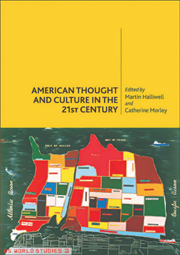Introduction: The Next American Century?
Published online by Cambridge University Press: 05 August 2013
Summary
One of the most symbolic political speeches of the early 21st century was given by the British Prime Minister Tony Blair. Speaking at the Labour Party Conference a month after the terrorist attacks on the World Trade Center and the Pentagon, Blair gave a lasting image of the political and moral chaos created by events of 11 September 2001. After discussing the need to extend freedom around the globe, Blair proclaimed ‘This is a moment to seize. The kaleidoscope has been shaken. The pieces are in flux. Soon they will settle again. Before they do, let us reorder this world around us.’ Although Blair did speak of ‘the starving, the wretched, the dispossessed, the ignorant’ and ‘those living in want and squalor’, behind these now famous words was the implication that, at least as long ago as the symbolic end of the Cold War in 1989, relative harmony and stability had characterised world affairs. Perhaps bolstered by the robust economies of the United States and United Kingdom in the late 1990s, Blair's speech did not reference the Gulf War of 1990–1, the recent ethnic wars in East Europe or ongoing political turbulence on the Asian subcontinent, which might have detracted from the vision of a world of certainty shaken to the core by the atrocities of 9/11. Within this mythic structure – and with the ashes still falling in Manhattan – Blair detected a moment of rupture, of irrevocable change, which would take time to assess and even longer to settle down into a meaningful pattern.
- Type
- Chapter
- Information
- American Thought and Culture in the 21st Century , pp. 1 - 18Publisher: Edinburgh University PressPrint publication year: 2008



